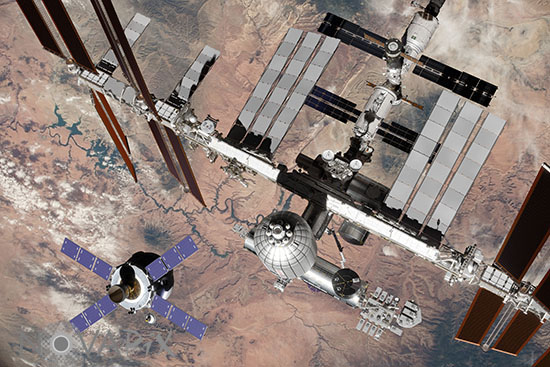Photo Agency - Astronomy - Space - Nature

Large habitat and ISS
author: Walter B. Myers/Novapix
reference: e-iss99-10502
Image Size 300 DPI: 42 * 28 cm
A manned Crew Exploration Vehicle (CEV) prepares to dock with a spacious inflatable habitat attached to the International Space Station (ISS) at an altitude of 250 nautical miles. This inflatable habitat, much larger than any existing ISS module, is a combination of layers of flexible material capped by sturdy docking hardware at either end. The inflatable portion is collapsed and sandwiched between the docking hardware portions for launch from earth and then inflated and pressurized with a breathable atmosphere once in orbit. The habitat features a pair of 42 x 24 inch windows to the outside. The habitat is attached to a pressurized module of the ISS via a Common Berthing Mechanism (CBM) while the other end of the habitat features an International Docking System Standard (IDSS) system for docking with manned spacecraft. The inflatable portion of the habitat is 45 feet long with a maximum diameter of 28 feet. Including docking hardware the total length is 55 feet. The interior of the habit, sans storage and other equipment, provides approximately 17 thousand cubic feet of micro gravity living space.
The CEV is 33 feet long with a maximum diameter of 20 feet while the solar voltaic panels have a maximum spread of a little over 60 feet.
Contact : Stéphane Aubin +33-(0)9-51-26-53-76
© Novapix - All rights reserved


